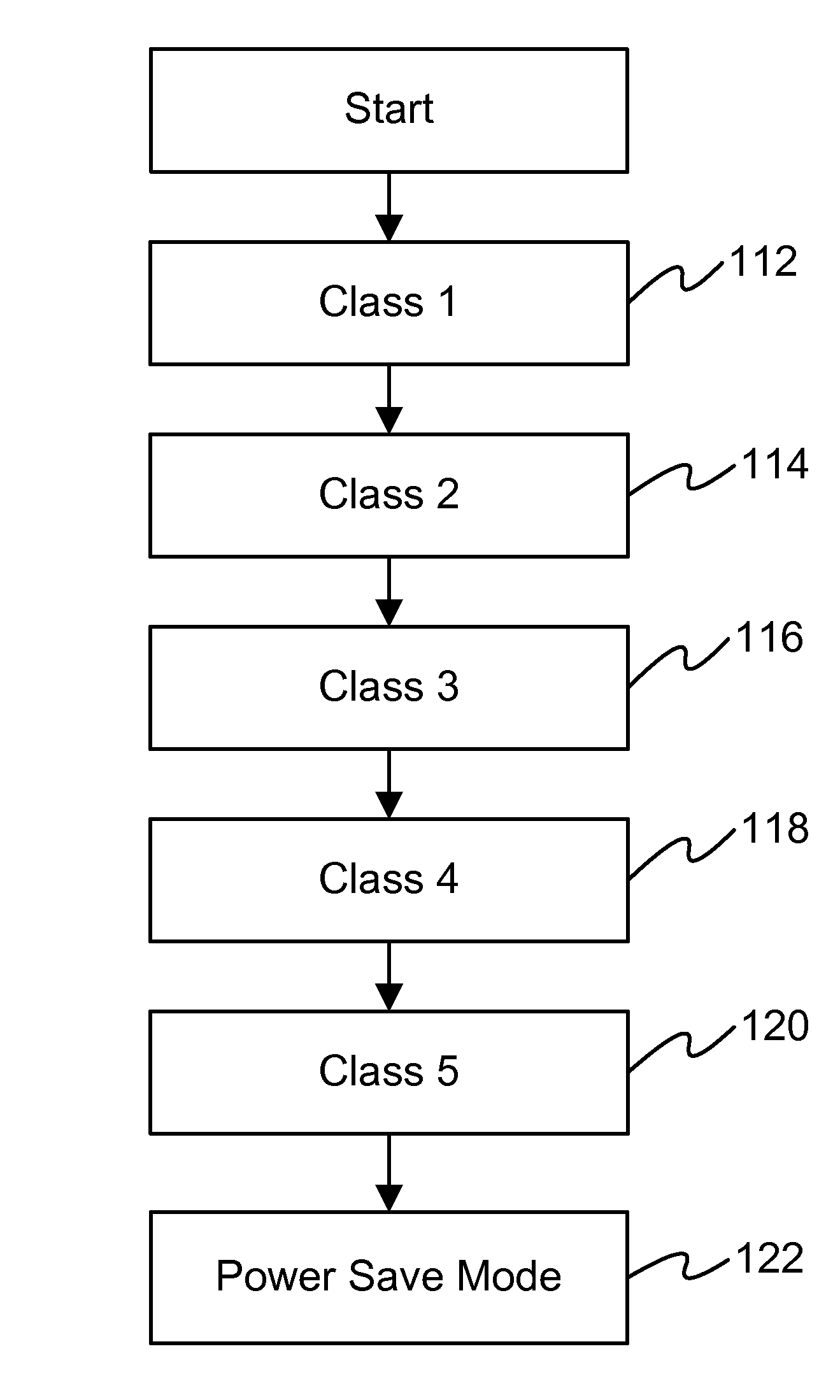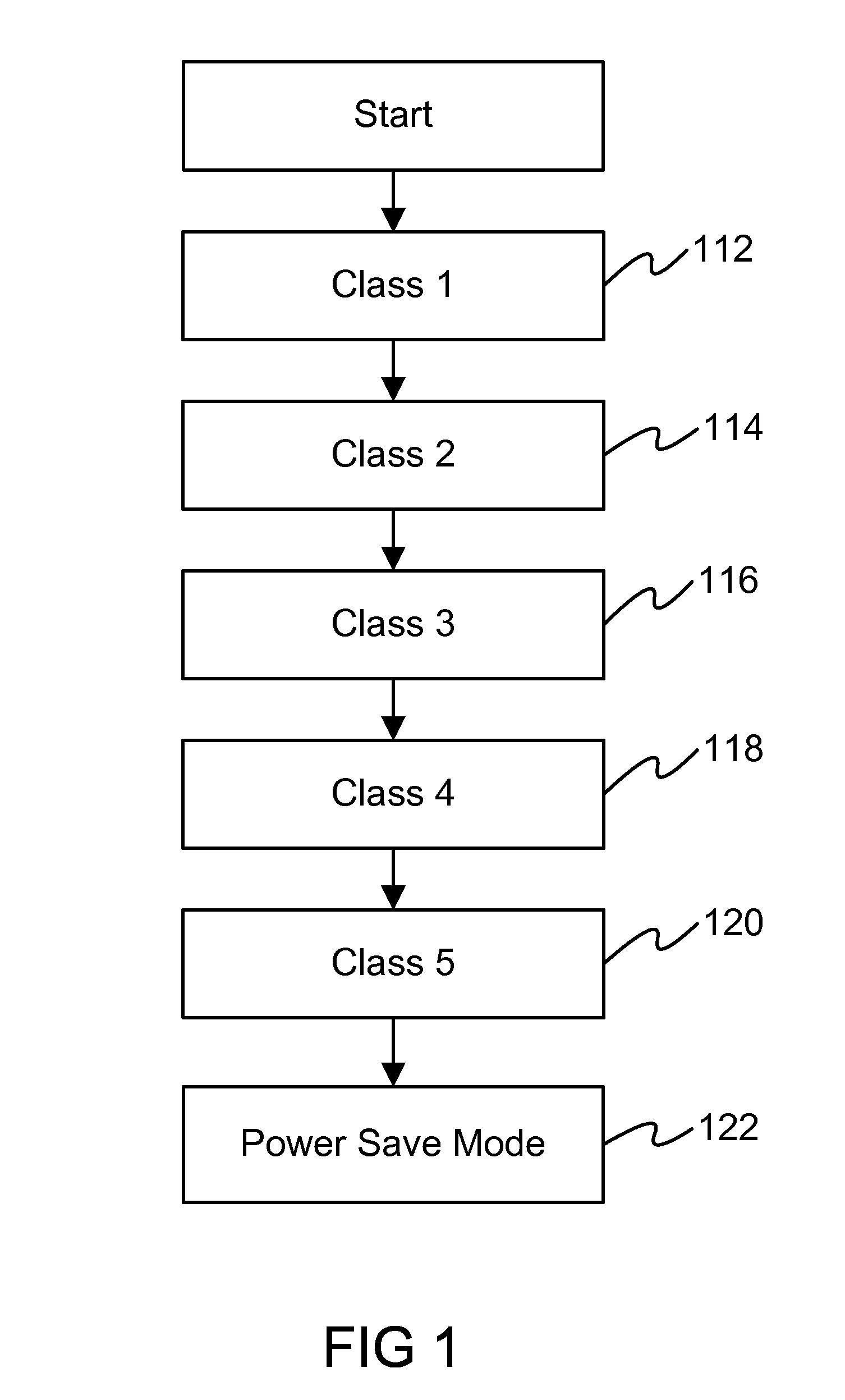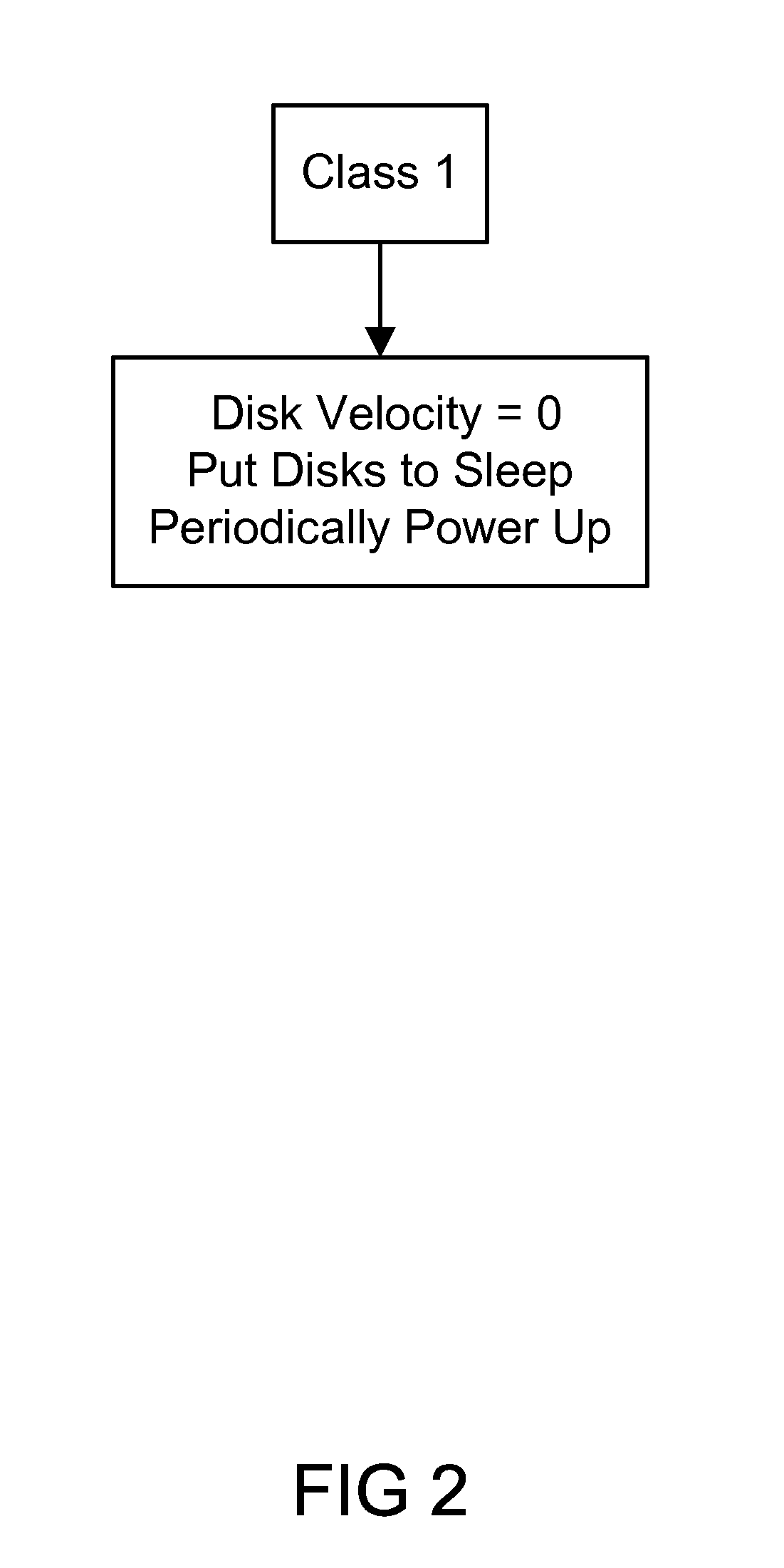Storage system and method for saving energy based on storage classes with corresponding power saving policies
- Summary
- Abstract
- Description
- Claims
- Application Information
AI Technical Summary
Benefits of technology
Problems solved by technology
Method used
Image
Examples
Embodiment Construction
[0010]In general, all components of the storage subsystem should use power management or a reduced-power mode. After hours of non-usage, an individual component should go into a lower-power mode. In particular for the disk drives, the invention teaches a method to automatically power down drives using an internal power-management within each drive and to identify certain groups of drives which will not be in use for long time, and to set these drives to even lower power levels.
[0011]An embodiment of invention powers off for all drives which are not part of fully formatted RAID arrays, or (as in DS8000®) belonging to arrays which are not part of an “Extent Pool”, i.e. where no volumes can currently be created on. When a request comes to format an array, to bring it into an Extent Pool, or to create a volume on it: The time lag for this to power these drives on then will be acceptable. In particular, this turns off disk drives for all RAID ranks whose capacity can be increased on dema...
PUM
 Login to View More
Login to View More Abstract
Description
Claims
Application Information
 Login to View More
Login to View More - R&D
- Intellectual Property
- Life Sciences
- Materials
- Tech Scout
- Unparalleled Data Quality
- Higher Quality Content
- 60% Fewer Hallucinations
Browse by: Latest US Patents, China's latest patents, Technical Efficacy Thesaurus, Application Domain, Technology Topic, Popular Technical Reports.
© 2025 PatSnap. All rights reserved.Legal|Privacy policy|Modern Slavery Act Transparency Statement|Sitemap|About US| Contact US: help@patsnap.com



